How to Find Cartridge Heater Suppliers Online
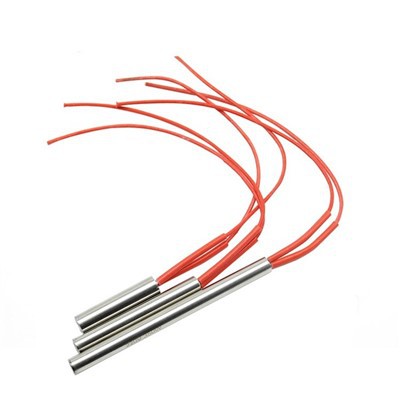
Cartridge heaters are essential for industries requiring precise temperature control. Whether for plastic molding, food processing, or laboratory equipment, finding reliable cartridge heater suppliers online is crucial. Choosing the right supplier impacts product quality, operational efficiency, and long-term cost savings. This guide will help you discover the best suppliers without feeling overwhelmed. Why Choosing the Right Supplier Matters The right supplier ensures you get high-quality cartridge heaters tailored to your needs. A reliable supplier offers: Durable products that meet industry standards. Customization options for specific applications. Technical support to address your challenges. Timely delivery to avoid production delays. Skipping these factors can lead to costly downtime and substandard performance. Let’s explore how to find the perfect supplier online. 1. Start with Online Research The internet is your best tool for finding reliable suppliers. Follow these steps: Use Search Engines Wisely Search for “cartridge heater suppliers near me” or “top-rated cartridge heater suppliers online.” Include specific terms like custom cartridge heaters or industrial-grade cartridge heaters. Look for suppliers ranking on the first page, as these are often the most trusted. Check Supplier Websites When browsing supplier websites: Ensure the company specializes in cartridge heaters. Look for detailed product descriptions with specifications. Verify if they mention certifications like ISO or CE compliance. Explore Online Marketplaces Platforms like: Alibaba ThomasNet Global Sources Host numerous cartridge heater suppliers. Compare ratings, reviews, and pricing before making contact. 2. Assess Supplier Credibility A supplier’s reputation speaks volumes about their reliability. Here’s how to check: Read Online Reviews Use platforms like Google Reviews or Trustpilot for unbiased opinions. Pay attention to common complaints, such as delivery delays or product defects. Ask for References Request customer references to gauge satisfaction levels. Contact their clients to ask about service reliability and product quality. Verify Certifications Suppliers with proper certifications ensure safety and performance standards. Common certifications include: 3. Evaluate Product Range and Features A diverse product catalog indicates a supplier’s capability to handle various needs. When reviewing options, consider: Wattage and voltage ranges. Materials like stainless steel or Incoloy for durability. Customizable sizes for specific applications. Look for Special Features Rapid heat-up time. Energy efficiency. Uniform temperature distribution. Compare these features across multiple suppliers to find the best match. 4. Compare Pricing and Lead Times Price and delivery time directly impact your project timelines and budget. Request Quotes Contact multiple suppliers to get detailed quotes. Look for: Pricing per unit for bulk orders. Discounts or special offers for repeat customers. Ask About Delivery Times Confirm lead times to ensure the supplier meets your schedule. Check if they offer expedited shipping options. Factor in Hidden Costs Customs or import fees for international orders. Shipping charges for small quantities. 5. Customer Support and After-Sales Service Customer service is critical for long-term partnerships. Prioritize suppliers offering: 24/7 support channels like live chat or phone assistance. Installation guides for quick setup. Warranty policies covering repairs or replacements. 6. Test the Supplier with Small Orders Before placing bulk orders, test the supplier’s reliability: Order a small batch to assess product quality. Monitor delivery times and packaging. Evaluate their responsiveness to issues or questions. Red Flags to Avoid Stay cautious if you notice: Vague product descriptions or missing technical details. No certifications or unclear warranty policies. Poor communication or delayed responses. Final Thoughts Finding the best cartridge heater suppliers online requires careful research and evaluation. From product quality to customer support, each factor plays a role in your decision. By following this guide, you can confidently select a supplier that meets your needs and ensures reliable performance. Remember, a dependable supplier like Cheri Heater is not just a vendor but a long-term partner in your success.
What Are The Industrial Benefits of a Cartridge Heater

Cartridge heaters play a critical role in various industries. If manufactured by a leading cartridge heater manufacturer, these heaters are vital for applications requiring precise and efficient heat. Designed to deliver targeted heat, they are perfect for numerous industrial processes. If you’re looking for reliable heating solutions, understanding the benefits of cartridge heaters is key. What Is a Cartridge Heater? A cartridge heater is a cylindrical heating element designed for insertion into a solid block or cavity. These heaters are used to transfer heat efficiently to specific areas. They consist of a resistance wire coil, insulated within a high-temperature casing, typically made of stainless steel. Commonly found in manufacturing, medical devices, and food production, cartridge heaters are known for their reliability and performance. Key Industrial Benefits of Cartridge Heaters Cartridge heaters provide numerous advantages, making them a preferred choice for various industries. Here are the major benefits: 1. Precision Heating Cartridge heaters deliver controlled and localized heat. They ensure uniform temperature distribution. Prevent overheating, protecting sensitive components. Useful in applications like injection molding and die-casting. 2. Energy Efficiency These heaters are designed to minimize energy wastage. High energy-to-heat conversion rates reduce electricity consumption. Lower operating costs over time. Eco-friendly heating solution compared to alternatives. 3. Compact Design Cartridge heaters are compact and easy to install. Fit into tight spaces without affecting performance. Allow for versatile design in equipment and machinery. Lightweight yet durable for extended use. 4. Durability and Longevity Built to withstand harsh conditions, cartridge heaters offer long service life. Resistant to corrosion and wear. Function effectively under high temperatures and pressure. Reduce maintenance frequency and costs. 5. Versatility Cartridge heaters are suitable for a wide range of industries: Plastic Manufacturing: Melts materials with precision. Pharmaceuticals: Used in sterilization equipment. Food Industry: Maintain proper temperatures in packaging machinery. Automotive: Assist in engine block heating Factors to Consider When Choosing a Cartridge Heater Selecting the right cartridge heater depends on the application and environment. Consider the following: Material: Stainless steel is durable and corrosion-resistant. Voltage and Wattage: Ensure compatibility with your power source. Temperature Range: Select a heater that can handle required temperatures. Size: Match the heater’s dimensions to your system. Custom Options: Some manufacturers offer tailored solutions for unique needs. Applications of Cartridge Heaters Cartridge heaters are essential in multiple fields due to their adaptability. Here’s how different industries benefit: Manufacturing: Used in molds, dies, and sealing machines for uniform heating. Medical: Found in surgical tools and diagnostic equipment. Aerospace: Provide critical heating for testing and research. Food Processing: Keep production lines running at optimal temperatures. Maintenance Tips for Cartridge Heaters To ensure a long lifespan and optimal performance, regular maintenance is crucial: Clean the surface to remove debris or residue. Check for signs of wear or damage. Monitor the temperature to avoid overheating. Replace faulty connections or wiring promptly. Why Partner With a Trusted Cartridge Heater Manufacturer? Working with an experienced cartridge heater manufacturer ensures high-quality products that meet industry standards. A good manufacturer provides: Customizable designs for specific applications. Reliable customer support and technical assistance. Quick delivery of high-performance heaters. Final Thoughts Cartridge heaters are a cornerstone of many industrial processes, offering precision, efficiency, and durability. By choosing the right and reputable cartridge heater manufacturer, businesses can optimize their operations and reduce costs. Whether you’re in manufacturing, medical, or food production, cartridge heaters deliver unmatched performance and reliability.
5 Reasons Why You Need a Ceramic Heating Pad
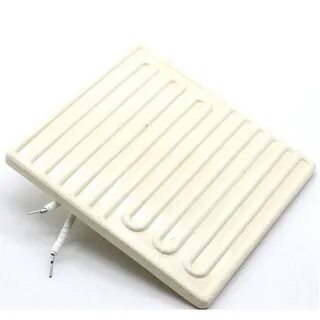
Are you looking for an efficient way to manage pain or keep warm? A Ceramic Heating Pad could be the perfect solution. With its advanced heating technology and multiple health benefits, this heating pad has gained popularity among people seeking comfort and relief. Whether it’s for soothing sore muscles or relieving chronic pain, this innovative product can make your life easier. Here are five reasons why it’s a must-have for your home or workplace. 1. Efficient Heat Distribution One standout feature of a Ceramic Heating Pad is its ability to provide even heat distribution. Unlike traditional heating pads, ceramic technology ensures consistent warmth across the entire surface. How It Works: The pad uses ceramic plates that retain heat for longer, offering deep and uniform warmth. Why It’s Better: No more worrying about cold spots or uneven heating that can make traditional pads less effective. This even distribution allows for better relief from pain, muscle stiffness, or tension in specific areas. It’s perfect for targeted therapy. 2. Fast Heating for Immediate Relief When you’re in pain, waiting for relief isn’t an option. A Ceramic Heating Pad heats up quickly, providing instant comfort. Heating Time: Most ceramic heating pads reach the desired temperature within seconds. Adjustable Settings: These pads often come with multiple heat levels, so you can customize your experience. This quick heat-up time makes it ideal for busy people who need efficient and immediate results. 3. Long-Lasting Durability Ceramic heating pads are built to last, making them a smart investment. The materials used are durable and reliable. Key Features: Heat-resistant ceramic plates High-quality outer fabric Strong wiring for safe use Benefits: These components ensure the pad maintains its performance for years without wear and tear. You won’t need to replace it frequently, saving money over time. 4. Health Benefits Backed by Science A Ceramic Heating Pad isn’t just about staying warm—it offers significant health advantages. Its deep-penetrating heat provides therapeutic benefits that improve overall well-being. Pain Relief: Helps with arthritis, back pain, and joint discomfort. Improved Circulation: Boosts blood flow to affected areas, speeding up the healing process. Stress Reduction: The soothing warmth relaxes muscles and relieves stress. Whether you’re an athlete recovering from an injury or someone managing chronic pain, this product can enhance your quality of life. 5. Energy-Efficient and Eco-Friendly Another advantage of a Ceramic Heating Pad is its energy efficiency. It uses less electricity compared to traditional models. Energy Consumption: Ceramic materials retain heat longer, reducing the need for constant power supply. Environmentally Friendly: Many brands focus on eco-conscious designs, reducing their environmental impact. This makes it a practical choice for those looking to save on energy bills while caring for the planet. Comparing Ceramic Heating Pads with Traditional Pads Let’s look at how ceramic heating pads compare to regular pads in key areas: This table shows why ceramic heating pads are a superior choice for most users. How to Choose the Right Ceramic Heating Pad When buying a Ceramic Heating Pad, keep these points in mind: Size: Choose a size that fits the area you need to heat. Heat Settings: Look for adjustable temperature controls for a customized experience. Safety Features: Opt for pads with automatic shut-off to prevent overheating. Portability: Lightweight designs are easier to carry and use on the go. With the right pad, you can enjoy maximum comfort and convenience. Final Thoughts A Ceramic Heating Pad is more than just a source of warmth—it’s an investment in your comfort and health. Its advanced features, quick heating, and health benefits make it a valuable addition to your daily routine. Whether you’re managing pain or simply want to relax, this heating pad offers a reliable and effective solution. Don’t wait any longer to experience the difference. Upgrade your comfort today with a high-quality ceramic heating pad and enjoy its unmatched benefits for years to come.
5 Reasons Why Industries Need a Band Heater
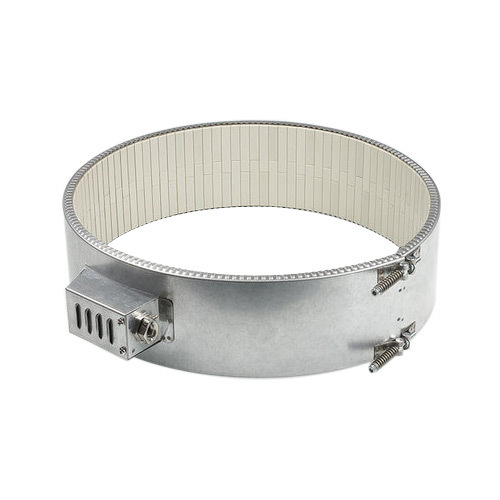
When it comes to industrial heating, finding the right solutions is crucial. A reliable band heater manufacturer can provide tools that improve efficiency and lower costs. But why are band heaters so important in industries today? Let’s break it down. Band heaters are specially designed heating elements that wrap around cylindrical surfaces, such as pipes or barrels. They provide consistent heat, ensuring processes run smoothly. From manufacturing to food processing, these heaters play a vital role in many industries. Here are five key reasons why industries rely on band heaters for their operations: 1. Precise Temperature Control Maintaining accurate temperatures is critical in many industrial processes. Band heaters are engineered to provide uniform and consistent heating. You cant compete technically with other brands without precise temperature control. They wrap around surfaces to deliver direct heat, reducing energy loss. Thermostats or controllers can be paired with them for precise adjustments. Perfect for applications like plastic molding or chemical processing, where temperature control is essential. With consistent heating, industries avoid uneven results and production delays. 2. Energy Efficiency Energy costs are a significant concern for industries. Band heaters are designed to maximize efficiency by minimizing heat loss. They are installed directly on surfaces, which ensures effective heat transfer. Insulation options reduce heat escape, lowering energy usage. Many modern band heaters are built with materials that enhance thermal efficiency. Choosing the right Band Heater Manufacturer can make a big difference in energy savings. 3. Versatility Across Applications Band heaters are versatile tools that work in a wide range of industries and environments. Common Applications Include: Industry Application Example Plastic Manufacturing Injection molding machines Food Processing Heating vessels for cooking or mixing Chemical Industry Maintaining process temperatures Oil and Gas Heating pipelines and storage tanks Their adaptability makes them a must-have for various industrial processes. 4. Durability and Long Lifespan Industrial tools need to withstand harsh environments, and band heaters are built for durability. Made with materials like stainless steel, they resist wear and tear. Can handle high temperatures without performance issues. Suitable for environments with frequent heating and cooling cycles. Investing in a high-quality band heater ensures long-term reliability and fewer replacements. 5. Improved Safety Safety is always a top priority in industrial settings. Band heaters contribute to safer operations by reducing risks. Properly designed heaters ensure controlled and stable heating. High-quality insulation prevents surface overheating and operator burns. Reliable Band Heater Manufacturers provide products that meet strict safety standards. By using band heaters, industries minimize accidents while maintaining productivity. Wrap Up Band heaters are essential for industries that require efficient and reliable heating solutions. They offer precise temperature control, energy efficiency, versatility, durability, and improved safety. Working with a trusted band heater manufacturer like Cheri Heater ensures you get high-quality heaters that meet your needs. If your business relies on industrial heating, consider incorporating band heaters into your processes. They save energy, improve safety, and deliver consistent results, making them a valuable investment for any industry.
Finned Cartridge Heater – Reliable Heating Solutions for Industrial Applications

Looking for a high-performance heating solution tailored to your industrial needs? Our Finned Cartridge Heater is the ideal choice for businesses that demand efficiency, durability, and consistent performance. Designed with precision engineering, this advanced heater is built to optimize thermal transfer and provide reliable performance across a wide range of applications. Key Features and Benefits Enhanced Heat Transfer The integrated fins maximize the surface area for superior heat dissipation, ensuring consistent temperature control and improved energy efficiency. Customizable Design Available in a variety of diameters, lengths, and watt densities, our finned cartridge heaters can be tailored to suit your specific industrial requirements. Durable Construction Built with high-quality materials, including corrosion-resistant stainless steel, these heaters are designed to withstand harsh operating conditions and ensure long-lasting performance. Versatile Applications Perfect for industrial processes such as drying, air heating, dehumidification, and sealing. The Finned Cartridge Heater is compatible with HVAC systems, packaging equipment, and various other machinery. Efficient Operation By optimizing thermal transfer and reducing energy consumption, this heater helps businesses lower operational costs while maintaining productivity. Industries We Serve Our Finned Cartridge Heater is trusted by a variety of industries, including: Manufacturing: Ideal for heat treatment, drying, and curing processes. HVAC: Used in air handling units and ventilation systems for efficient heating. Automotive: Enhances the performance of machinery requiring precise thermal management. Why Choose Our Finned Cartridge Heater? We understand the unique challenges faced by businesses in demanding industrial environments. That’s why our Finned Cartridge Heaters are designed to deliver unmatched performance and reliability. By partnering with us, you gain: Expert Support: Our team of engineers works closely with you to develop heating solutions that match your exact specifications. Fast Turnaround: We ensure quick delivery times so you can keep your operations running smoothly. Quality Assurance: Every heater undergoes rigorous testing to ensure it meets the highest standards of quality and safety. Custom Solutions for Your Business Whether you need a standard design or a custom-built Finned Cartridge Heater, we’ve got you covered. Our flexible manufacturing process allows us to adapt to your unique requirements, delivering heating solutions that align with your operational goals. Contact Us Today Ready to optimize your industrial heating systems? Contact us today to learn more about our Finned Cartridge Heaters and how they can benefit your business. Our team is here to provide personalized assistance and ensure you find the perfect solution for your needs.
What is the Principle of Immersion Tubular Heater?
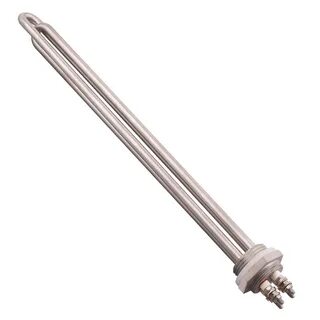
An immersion tubular heater is an efficient, compact, and widely used solution for heating liquids, gases, and other substances in various industries. Understanding its principle is crucial for selecting and maintaining heating solutions in industrial and residential settings. Unlike traditional heating methods, immersion tubular heaters provide direct and targeted heating, making them energy-efficient and reliable. Let’s break down the core principles and key applications to help you maximize their potential. The Core Principle of an Immersion Tubular Heater At its core, the immersion tubular heater operates on the principle of electrical resistance. Here’s how it works: Electrical energy is converted into heat. When electric current flows through a resistive heating element (often made of alloys like nichrome), it generates heat. Direct immersion enhances heat transfer. The tubular heater is submerged in the medium it’s designed to heat (such as water, oil, or chemicals). This eliminates heat loss commonly associated with indirect methods. Uniform heating is achieved. The tubular design ensures even distribution of heat across the medium, preventing hot spots or uneven temperatures. Key Components of an Immersion Tubular Heater Sheath Material: Protects the heating element from corrosion. Common options include stainless steel, titanium, or Incoloy, chosen based on the medium being heated. Heating Element: The core component, responsible for generating heat through resistance. Insulation: Separates the element from the sheath to ensure safety and efficiency. Mounting Options: These include flanged, threaded, or over-the-side designs, catering to diverse applications. Applications of Immersion Tubular Heater These heaters play a vital role across industries due to their versatility and efficiency. Here are some common uses: Industrial Processing: Used in chemical tanks, oil refineries, and water treatment plants for precise temperature control. HVAC Systems: Provides supplemental heat for air-handling units. Food and Beverage Industry: Ensures optimal temperatures in cooking or pasteurization processes. Renewable Energy: Supports thermal storage in solar heating systems. Why They Are Preferred: Energy Efficiency: Direct heating minimizes waste. Compact Design: Saves space without compromising performance. Customizable Options: Tailored to specific industrial or domestic needs. Advantages of Immersion Tubular Heater Over Alternatives When compared to other heating solutions, immersion tubular heaters offer distinct advantages: Faster Heating: Direct immersion ensures rapid heat transfer. Durability: High-grade materials extend lifespan, even in corrosive environments. Cost-Effectiveness: Reduced energy consumption lowers operational costs. Safety Features: Equipped with thermal cutoffs and protective coatings to prevent overheating. Maintenance Tips for Long-Term Performance To ensure the longevity and efficiency of your immersion tubular heater, follow these actionable tips: Inspect Regularly: Check for signs of corrosion, scaling, or physical damage on the sheath. Clean Periodically: Prevent scale buildup, especially in hard water applications, to maintain efficiency. Monitor Electrical Connections: Ensure tight and secure connections to avoid power issues. Replace Damaged Components Promptly: A compromised element or sheath can lead to safety hazards. Match Materials to the Medium: Use corrosion-resistant materials for chemicals or saltwater applications. Innovations in Immersion Tubular Heaters The heating industry is constantly evolving. Some recent advancements in immersion tubular heaters include: Smart Temperature Control: Integration with IoT for real-time monitoring and remote adjustments. Energy Optimization: Use of advanced insulation materials to improve energy retention. Custom Designs: Manufacturers now offer more tailored configurations for niche applications. Final Words The immersion tubular heater remains a cornerstone in efficient and reliable heating. By leveraging its principle of direct heat transfer, industries can achieve precise temperature control while saving energy. Regular maintenance and understanding its core functionality can ensure optimal performance for years. Whether you’re looking to heat water in a residential tank or manage a chemical process in an industrial setup, understanding this heater’s principles equips you to make informed decisions.
How to Pick The Best Electric Tubular Heater Supplier
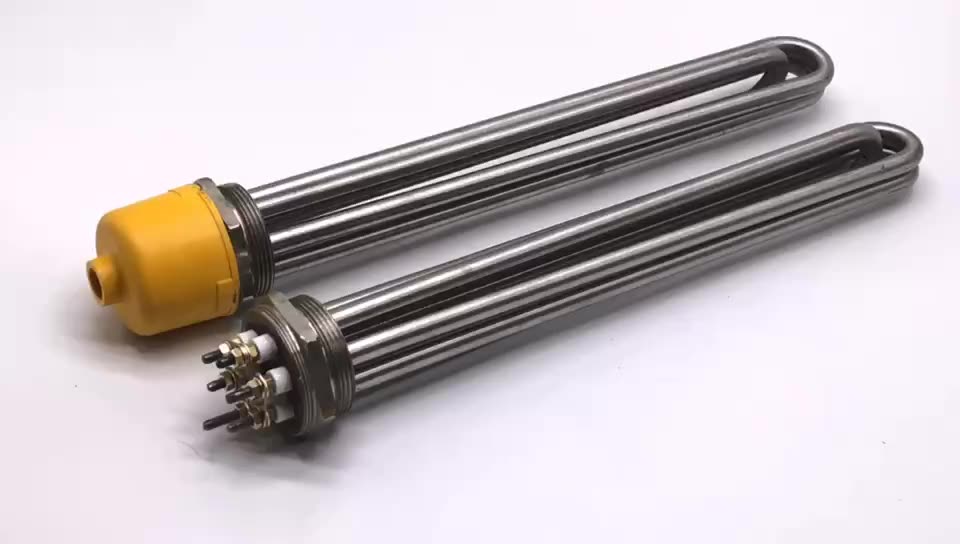
When it comes to selecting an electric tubular heater supplier, your decision can impact everything from energy efficiency to product longevity. A wrong choice might lead to costly replacements, inefficiencies, and disruptions in your operations. With so many options on the market, narrowing down your choice demands a focused and informed approach. This guide will help you pick the best supplier with actionable insights and data-driven tips. Why Your Electric Tubular Heater Supplier Choice Matters The global market for tubular heaters is projected to grow significantly, reaching $1.2 billion by 2030. Industries like manufacturing, healthcare, and food processing depend heavily on these heaters for consistent performance. Poor-quality products or unreliable suppliers can lead to: Increased operational costs. Safety hazards from subpar materials. Unplanned downtime. Partnering with a trusted supplier ensures reliability, quality, and regulatory compliance. Key Factors to Evaluate When assessing suppliers, focus on the following critical elements: 1. Product Quality and Certifications Ensure the supplier offers products that comply with international standards like ISO 9001 and CE. Look for materials like stainless steel or Incoloy, which enhance durability and thermal performance. Check customer reviews or request samples to test the heater’s performance. 2. Experience in the Industry Suppliers with 10+ years of experience typically have refined manufacturing processes and a better understanding of industry needs. Ask questions like: Have they supplied heaters to industries similar to yours? Do they offer customized solutions for specific applications? 3. Energy Efficiency of Their Products With rising energy costs, efficiency is non-negotiable. The best suppliers prioritize energy-efficient designs, reducing electricity consumption by up to 25%. Request data sheets showing energy ratings and performance metrics. How to Verify Electric Tubular Heater Supplier Reliability Relying on claims is risky. Instead, follow these steps to ensure reliability: Check References: Ask for case studies or testimonials from previous clients. Inspect Facilities: If possible, visit the supplier’s manufacturing site to observe quality control measures. Analyze Supply Chain Robustness: Delays in delivery can impact your operations. Verify their logistics capabilities and lead times. Questions to Ask Your Electric Tubular Heater Supplier Make the evaluation process seamless with these questions: Can you provide detailed product specifications and certifications? What’s your standard lead time for bulk orders? How do you ensure consistent product quality across batches? Do you offer after-sales support or warranties? What’s your minimum order quantity, and are discounts available for bulk purchases? Red Flags to Avoid Be cautious of these warning signs: Lack of Transparency: If the supplier hesitates to share certifications or references, it’s a red flag. Unrealistic Pricing: Prices significantly lower than competitors might indicate inferior quality. Inconsistent Communication: Poor customer service early on may signal bigger issues down the line. Final Thoughts Choosing the right electric tubular heater supplier is a decision that extends beyond price. Focus on quality, experience, and reliability. Conduct due diligence, ask the right questions, and prioritize suppliers with a proven track record in your industry. Investing time in this process ensures long-term operational efficiency and cost savings. With the right supplier, your business will have a reliable heating solution tailored to its needs.
Top 3 Industries That Use Cartridge Heater With Thermocouple
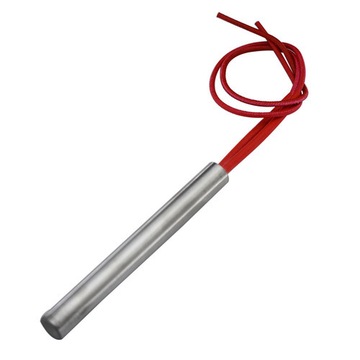
A cartridge heater with thermocouple is a critical tool for industries requiring precise temperature control. By integrating a thermocouple, this heater not only generates heat but also provides real-time temperature feedback. This ensures enhanced accuracy, energy efficiency, and improved process reliability. Below, we’ll examine the top industries benefiting from this advanced technology and how it supports their operations. 1. Plastic Manufacturing Plastic manufacturing heavily relies on cartridge heaters with thermocouples for precision heating. From injection molding to extrusion, these heaters are vital for producing high-quality plastic components. Injection Molding: Maintaining accurate temperature profiles in the mold is essential. Any deviation can result in defective products. A cartridge heater with thermocouple ensures the mold temperature remains consistent, leading to fewer errors. Plastic Extrusion: During the extrusion process, plastic materials must reach precise melting points. A built-in thermocouple monitors the temperature in real-time, avoiding overheating or under-heating that could compromise the product’s integrity. Key Benefits for Plastic Manufacturing: Minimized material wastage. Faster production cycles due to consistent heating. Improved product quality with fewer defects. 2. Pharmaceutical and Medical Device Industry Accuracy and cleanliness are paramount in the pharmaceutical and medical device sectors. A cartridge heater with thermocouple helps maintain sterile conditions while ensuring the precision required for sensitive applications. Sterilization Equipment: Cartridge heaters are used in autoclaves and sterilization chambers, ensuring even heating throughout. The thermocouple continuously monitors the temperature, ensuring compliance with strict regulatory standards. Medical Device Manufacturing: Processes like sealing and welding of medical-grade plastics depend on precise temperatures. Thermocouple feedback ensures these processes meet exact specifications, eliminating risks of contamination or faulty seals. Why It’s Essential in This Industry: Supports strict compliance with FDA and ISO standards. Prevents overheating that could damage sensitive materials. Ensures uniform heating critical for sterile environments. 3. Food and Beverage Processing The food and beverage industry also benefits from cartridge heaters with thermocouples, especially for tasks requiring precision and safety. Packaging Machinery: Sealing food packages requires consistent temperatures to avoid weak or over-sealed packaging. Thermocouple-equipped cartridge heaters provide exact temperature feedback, ensuring every seal is reliable. Liquid Heating: Processes like pasteurization or maintaining the warmth of liquid foods depend on temperature stability. With a cartridge heater and thermocouple, the risk of overheating or uneven heat distribution is eliminated. Key Advantages in Food Processing: Maintains consistent quality across batches. Enhances food safety by preventing under-processing. Reduces energy consumption with real-time temperature adjustments. Why Cartridge Heater With Thermocouple Stands Out The integration of a thermocouple into cartridge heaters provides numerous advantages across industries: Real-Time Monitoring: The thermocouple gives immediate feedback, enabling precise adjustments. Energy Efficiency: By avoiding temperature overshoots, these heaters reduce unnecessary energy use. Reliability: They enhance process consistency, leading to higher output quality. Final Thoughts From plastic manufacturing to pharmaceuticals and food processing, the cartridge heater with thermocouple proves invaluable in applications demanding precision and efficiency. Its ability to provide accurate temperature control, coupled with durability, makes it a staple in modern industrial operations. If you’re searching for a heating solution that delivers consistent results, consider this innovative technology.
5 Common Applications of a Band Heater
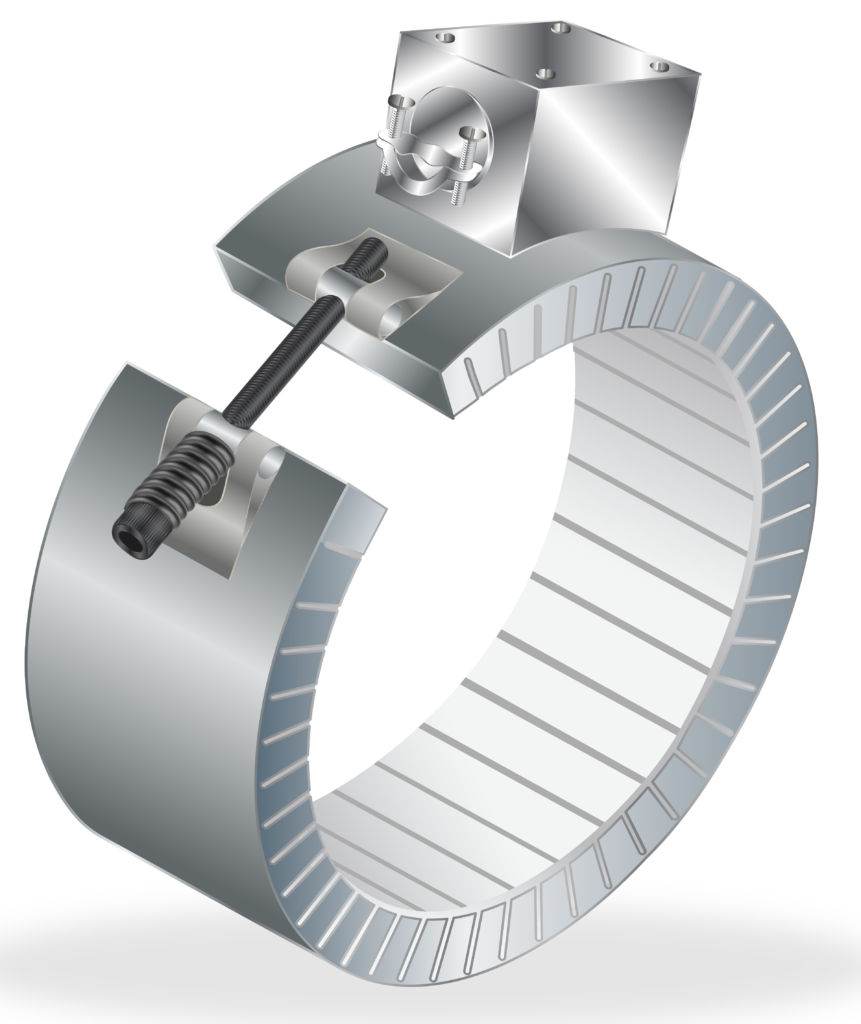
Band heaters are an essential component in industries where consistent heat is crucial for processes and production. Their precision, efficiency, and durability make them indispensable. Used in machinery, manufacturing, and various industrial applications, a band heater plays a critical role in optimizing production. In this article, we’ll see five common applications where band heaters are most effective and beneficial. 1. Plastic Injection Molding Plastic injection molding is a complex process requiring exact temperature control. In this application, band heaters are essential for heating the nozzles and barrels that melt plastic pellets before they’re injected into molds. Here’s why band heaters are ideal for this application: Precision Control: Band heaters allow for precise heat application, keeping the plastic at the right temperature for optimal flow. Energy Efficiency: With their direct contact heating, band heaters reduce energy wastage, cutting down on operational costs. Durability: Many band heaters are built to withstand long operational hours, reducing downtime and boosting productivity. 2. Food Processing Equipment Band heaters play a significant role in food processing, particularly in machines that rely on heated cylinders or pipes. From pasteurization to canning and drying processes, band heaters provide consistent heat, ensuring that food products are safe and of high quality. Even Heating: Band heaters apply uniform heat to prevent hotspots, which is critical for food quality and safety. Safety Compliance: Many band heaters are designed with materials and coatings that comply with food-grade safety standards, maintaining cleanliness and preventing contamination. Customizable Temperature: Adjustable temperature controls allow for flexibility across various stages of food processing, from heating to maintaining temperatures. 3. Pharmaceutical Manufacturing In pharmaceutical production, accuracy and consistency are paramount. Band heaters are commonly used in reactors, dryers, and other equipment that require constant heat to process active ingredients, ensuring product stability and quality. Stable Heating for Sensitive Ingredients: Band heaters maintain a stable environment, crucial for sensitive chemical reactions. Enhanced Safety: Pharmaceutical applications demand heaters that minimize the risk of overheating. Band heaters with protective controls help meet this need. Compatibility with Stainless Steel: Many band heaters are compatible with stainless steel reactors, which are standard in pharmaceutical production for their resistance to corrosion. 4. Packaging Machinery Band heaters are also frequently found in packaging machinery, where they heat and seal materials such as plastic, foil, and laminates. Reliable and consistent heating is essential to produce secure seals that protect product quality during transit and storage. High-Quality Seals: Band heaters enable precise temperature control to produce tight, durable seals. Reduced Downtime: Packaging operations run continuously, and band heaters with high thermal efficiency minimize energy consumption and maintenance requirements. Adjustable Heating for Different Materials: Band heaters allow easy adjustments to accommodate various packaging materials, making them versatile for packaging multiple types of goods. 5. Diesel Engine Preheating A band heater is often used in the automotive industry, especially in preheating diesel engines in colder climates. Preheating diesel engines ensures a smoother start, prevents engine damage, and reduces emissions from incomplete combustion. Quick Start in Cold Weather: Band heaters make diesel engines easier to start, even in freezing conditions. Reduced Wear on Engine Components: Preheating reduces stress on engine components, extending engine life. Improved Fuel Efficiency: By optimizing combustion, band heaters help improve fuel efficiency and reduce harmful emissions. Final Thoughts The band heater remains a fundamental solution in industries demanding consistent and efficient heating. Whether it’s for plastic injection molding or ensuring safe food processing, the flexibility, reliability, and efficiency of band heaters make them an excellent choice across various applications.
3 Reasons Why Cartridge Heater is a Must in Industrial Applications
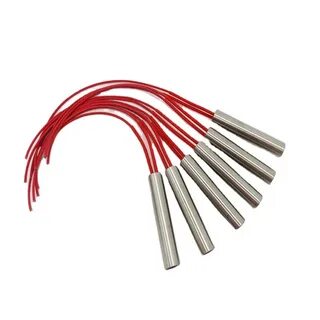
A cartridge heater is indispensable in the industrial sector, widely relied upon to deliver efficient, high-temperature heating for various processes. Known for their compact yet powerful build, these heaters fit into tight spaces, delivering precise heat where it’s needed most. From manufacturing to automotive and beyond, cartridge heaters enhance operational efficiency, help maintain quality, and lower costs. Let’s delve into the top reasons why a cartridge heater is essential in industrial applications, backed by research and real-world insights. 1. High-Temperature Efficiency and Precision Control One of the main advantages of using a cartridge heater in industrial applications is its high-temperature capability and precision. Many industries rely on heating elements that can reach temperatures above 1,200°F (649°C) to ensure effective processing. Here’s how cartridge heaters excel in these demanding environments: Efficient Heat Distribution: Cartridge heaters feature a unique design that allows them to heat up quickly and distribute heat evenly. This is essential in industries like plastic molding and packaging where consistent heat levels directly impact product quality. Precision Control: Advanced cartridge heaters often include control mechanisms that allow for precise temperature adjustments, ensuring no energy is wasted and that materials aren’t damaged by overheating. With these features, cartridge heaters help maintain the thermal stability needed for industries such as automotive manufacturing and 3D printing, where even minor temperature variations can impact the outcome. 2. Durability and Reliability in Harsh Environments Industrial environments are often harsh, with exposure to chemicals, high-pressure settings, and rough handling. Cartridge heaters are designed to withstand these challenges, making them a durable and long-lasting heating solution: Stainless Steel Sheathing: Many cartridge heaters are built with stainless steel or other corrosion-resistant materials, which protect against environmental wear and tear. This is vital in industries like pharmaceutical and chemical processing. High Watt Density: Cartridge heaters can operate at high watt densities, meaning they can produce a lot of heat in a small space without degrading. This allows them to maintain consistent performance over time. In high-demand applications, these heaters often last thousands of hours without requiring replacement, significantly reducing maintenance costs and downtime. 3. Versatility Across Multiple Industrial Uses The versatility of cartridge heaters makes them suitable for a wide array of industrial applications, including food production, metalworking, and automotive manufacturing. They can be customized in terms of size, wattage, and voltage, making them adaptable to specific needs: Plastic Injection Molding: Cartridge heaters provide the precise and rapid heating required for molding materials into specific shapes. Consistent heat application ensures high-quality, defect-free products. Packaging Machinery: Packaging industries rely on cartridge heaters to seal products effectively. The consistent and controlled heat ensures seals are strong and leak-proof, which is especially crucial in food and medical packaging. Hot Runner Systems: These systems use cartridge heaters to keep the plastic material molten, allowing for efficient flow into molds and reducing material waste. Final Words For industrial operations that demand efficient, durable, and precise heating solutions, cartridge heater stands out as a top choice. With their wide adaptability and ability to operate in high-stress environments, cartridge heaters prove essential for optimizing production quality and efficiency.










